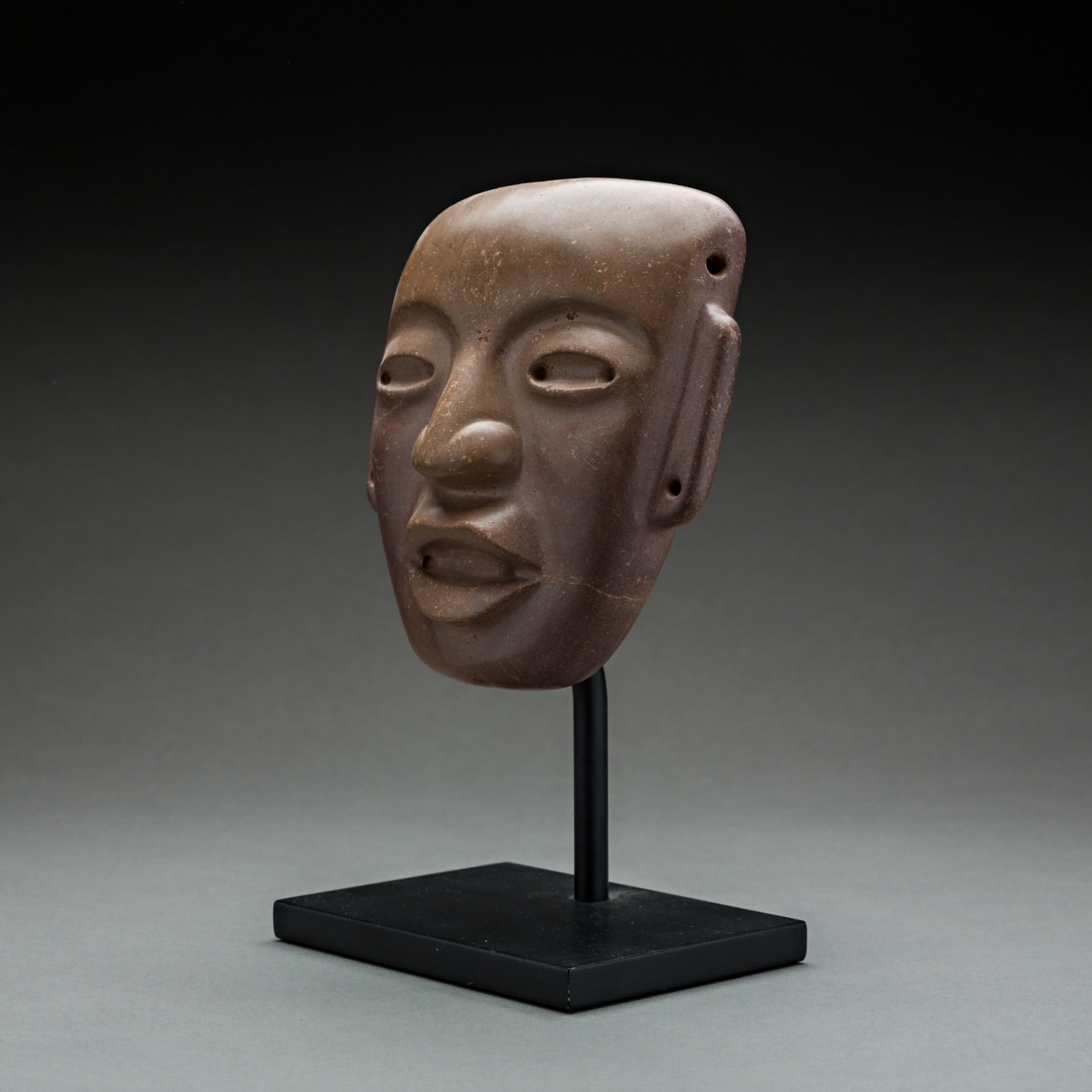Teotihuacan Stone Mask, 100 BCE - 200 CE
Stone
15.2 x 16.5 cm
6 x 6 1/2 in
6 x 6 1/2 in
DB.042
Further images
Teotihuacán is an ancient Mesoamerican city located in a sub-valley of the Valley of Mexico, located in the State of Mexico 40 kilometres (25 mi) northeast of modern-day Mexico City,...
Teotihuacán is an ancient Mesoamerican city located in a sub-valley of the Valley of Mexico, located in the State of Mexico 40 kilometres (25 mi) northeast of modern-day Mexico City, known today as the site of many of the most architecturally significant Mesoamerican pyramids built in the pre-Columbian Americas. At its zenith, perhaps in the first half of the 1st millennium AD, Teotihuacan was the largest city in the pre-Columbian Americas, with a population estimated at 125,000 or more, making it at least the sixth largest city in the world during its epoch. Apart from the pyramids, Teotihuacan is also anthropologically significant for its complex, multi-family residential compounds, the Avenue of the Dead and the small portion of its vibrant murals that have been exceptionally well-preserved. Additionally, Teotihuacan exported fine obsidian tools that garnered high prestige and widespread usage throughout Mesoamerica. The city is thought to have been established around 100 BC, with major monuments continuously under construction until about 250 AD. The city may have lasted until sometime between the 7th and 8th centuries AD, but its major monuments were sacked and systematically burned around 550 AD. Teotihuacan began as a new religious centre in the Mexican Highlands around the first century AD. This city came to be the largest and most populated centre in the pre-Columbian Americas. Teotihuacan was even home to multi-floor apartment compounds built to accommodate this large population. The term Teotihuacan (or Teotihuacano) is also used for the whole civilization and cultural complex associated with the site. Teotihuacán masks always exhibit high quality workmanship.
There was no tradition of portraiture in the city but masks depicting the human face are abundant in the style associated with the site. With its geometrically rendered horizontal brow, the trapezoidal face with the squared ears, the triangular nose, open oval mouth with full lips and open eyes, this mask depicts the idealized facial type that seems to function as a symbol, similar to other standardized motifs present in the art of Teotihuacan. The depressions of the eyes suggests that this mask, like many of its counterparts, might have originally possessed inlaid shells or stones for the depiction of eyes. Although the mask is carved out of stone, in its original state it may have been painted like other masks of this type. Perforations at the sides suggest that it was intended to be attached to another object, but given the weight of the stone and the lack of holes for the eyes and mouth, these masks were probably not worn by living people. Instead, they may have been attached to sculptures of human figures or mounted on mummy or deity bundles.
There was no tradition of portraiture in the city but masks depicting the human face are abundant in the style associated with the site. With its geometrically rendered horizontal brow, the trapezoidal face with the squared ears, the triangular nose, open oval mouth with full lips and open eyes, this mask depicts the idealized facial type that seems to function as a symbol, similar to other standardized motifs present in the art of Teotihuacan. The depressions of the eyes suggests that this mask, like many of its counterparts, might have originally possessed inlaid shells or stones for the depiction of eyes. Although the mask is carved out of stone, in its original state it may have been painted like other masks of this type. Perforations at the sides suggest that it was intended to be attached to another object, but given the weight of the stone and the lack of holes for the eyes and mouth, these masks were probably not worn by living people. Instead, they may have been attached to sculptures of human figures or mounted on mummy or deity bundles.







